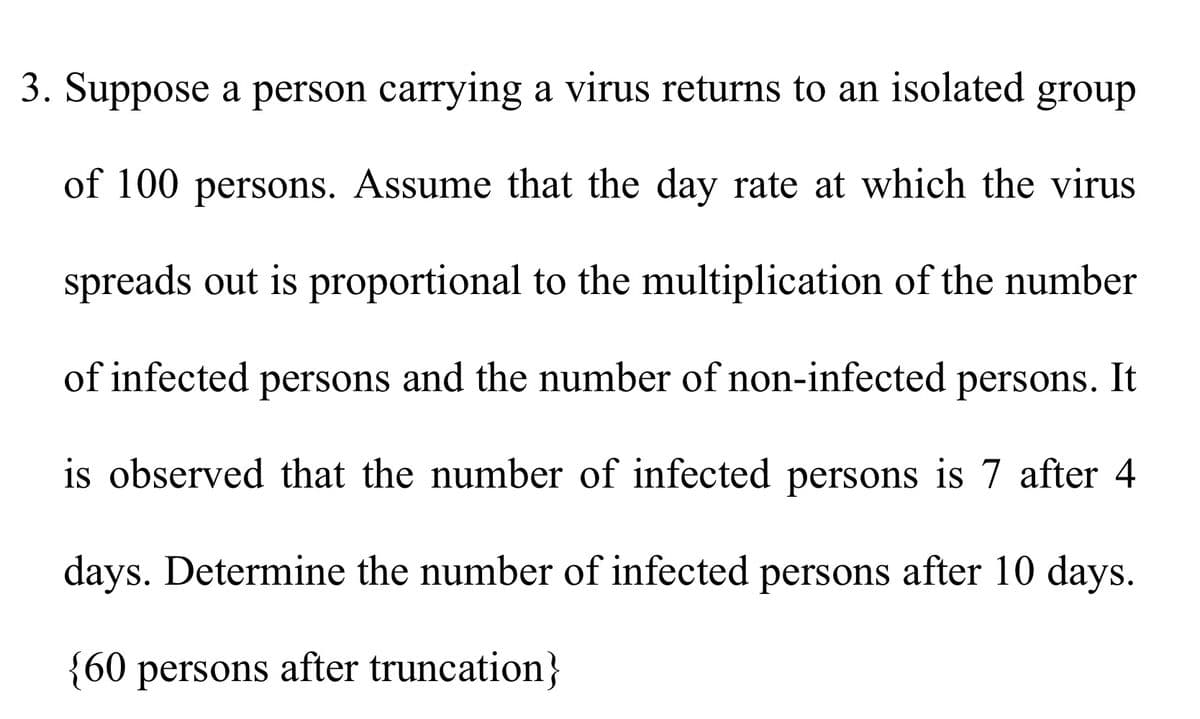3. Suppose a person carrying a virus returns to an isolated group of 100 persons. Assume that the day rate at which the virus spreads out is proportional to the multiplication of the number of infected persons and the number of non-infected persons. It is observed that the number of infected persons is 7 after 4 days. Determine the number of infected persons after 10 days. {60 persons after truncation}
3. Suppose a person carrying a virus returns to an isolated group of 100 persons. Assume that the day rate at which the virus spreads out is proportional to the multiplication of the number of infected persons and the number of non-infected persons. It is observed that the number of infected persons is 7 after 4 days. Determine the number of infected persons after 10 days. {60 persons after truncation}
Linear Algebra: A Modern Introduction
4th Edition
ISBN:9781285463247
Author:David Poole
Publisher:David Poole
Chapter6: Vector Spaces
Section6.7: Applications
Problem 16EQ
Related questions
Question
K-3

Transcribed Image Text:3. Suppose a person carrying a virus returns to an isolated group
of 100 persons. Assume that the day rate at which the virus
spreads out is proportional to the multiplication of the number
of infected persons and the number of non-infected persons. It
is observed that the number of infected persons is 7 after 4
days. Determine the number of infected persons after 10 days.
{60 persons after truncation}
Expert Solution
This question has been solved!
Explore an expertly crafted, step-by-step solution for a thorough understanding of key concepts.
Step by step
Solved in 3 steps with 3 images

Recommended textbooks for you

Linear Algebra: A Modern Introduction
Algebra
ISBN:
9781285463247
Author:
David Poole
Publisher:
Cengage Learning


Algebra & Trigonometry with Analytic Geometry
Algebra
ISBN:
9781133382119
Author:
Swokowski
Publisher:
Cengage

Linear Algebra: A Modern Introduction
Algebra
ISBN:
9781285463247
Author:
David Poole
Publisher:
Cengage Learning


Algebra & Trigonometry with Analytic Geometry
Algebra
ISBN:
9781133382119
Author:
Swokowski
Publisher:
Cengage